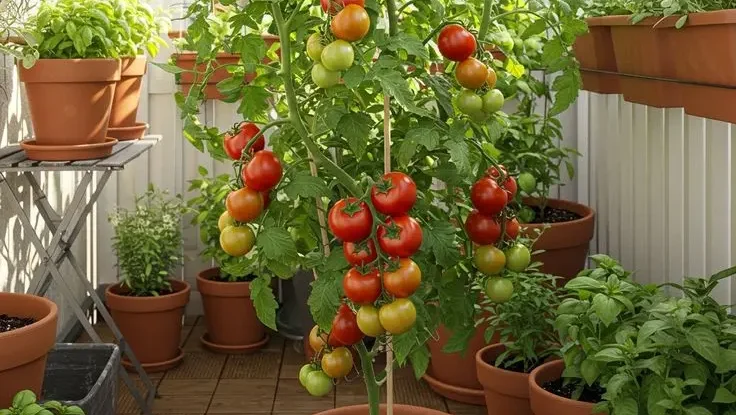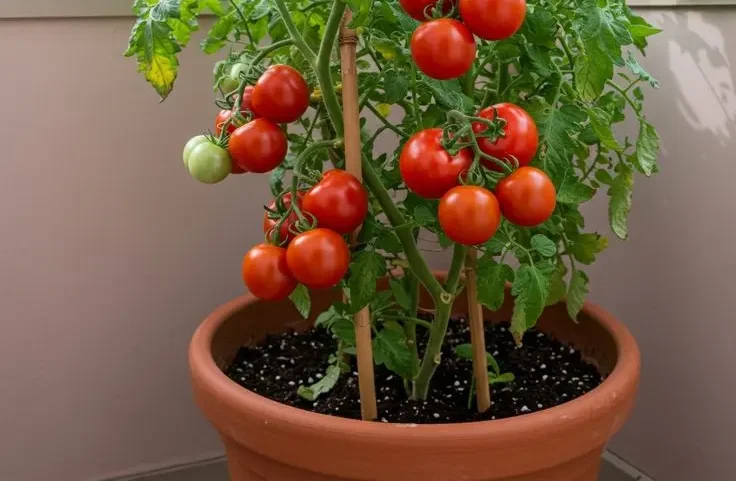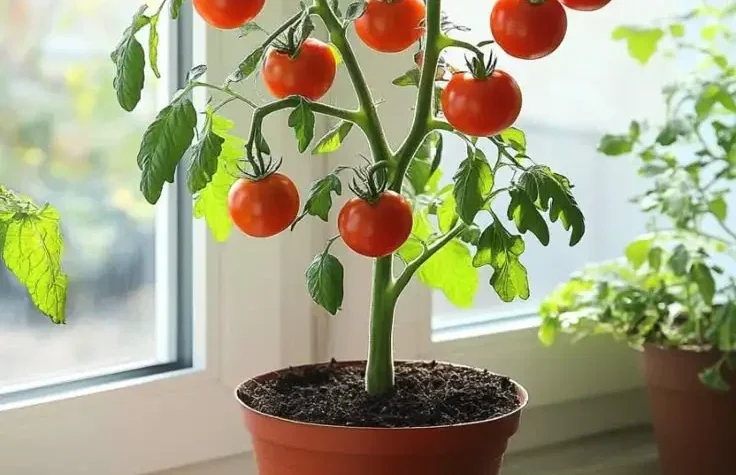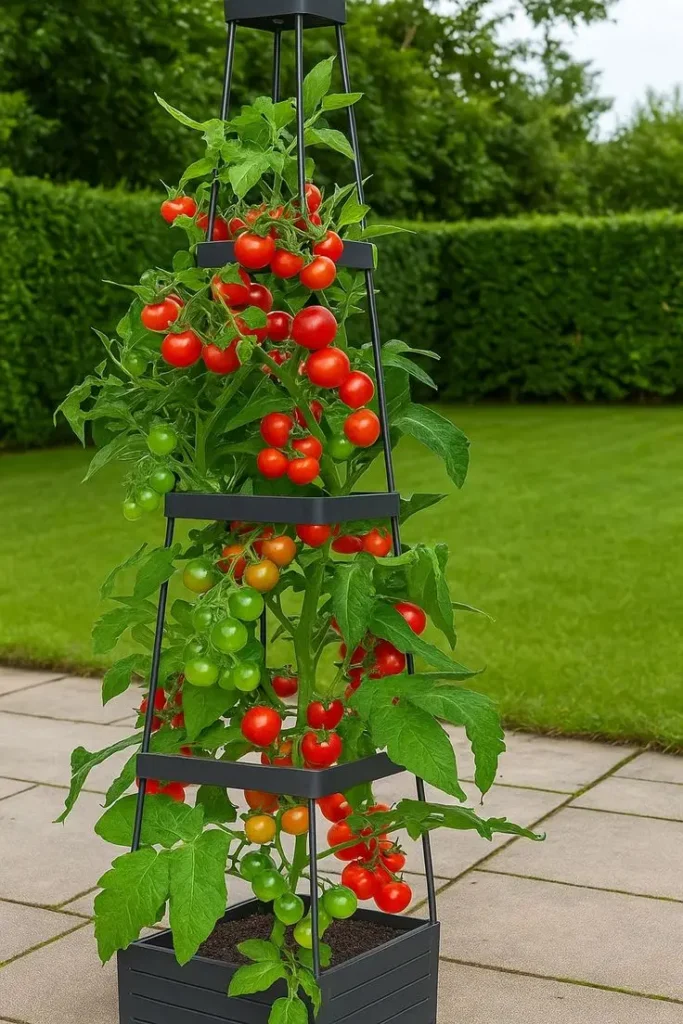Growing your own food brings joy and freshness to your daily life. If you want to enjoy juicy tomatoes all year, learning how to grow a tomato plant indoors is a perfect start. Indoor gardening allows you to control the environment and get fresh produce even during winter.
This guide will teach you how to grow a tomato plant indoors step by step from choosing seeds to harvesting your first fruits. Let’s dive into the process and turn your indoor space into a mini tomato paradise!
Why Grow Tomatoes Indoors?

Growing tomatoes indoors has many benefits. First, you can enjoy delicious, pesticide-free tomatoes anytime. Also, you don’t have to worry about unpredictable weather, pests, or outdoor soil conditions.
Another great advantage is that indoor tomato plants improve air quality and bring a lively green touch to your home. Plus, watching your plants grow can be relaxing and rewarding. With the right care, you can have ripe, red tomatoes right from your kitchen window.
Choosing the Right Tomato Variety
Not all tomato plants are ideal for indoor growing. Smaller, compact varieties work best because they adapt easily to limited space.
Here are some excellent indoor tomato varieties:
-
Tiny Tim: A compact cherry tomato plant perfect for small pots.
-
Red Robin: Grows well in containers and yields plenty of small fruits.
-
Micro Tom: Known as the world’s smallest tomato plant, ideal for tight spaces.
When selecting your seeds, choose a determinate variety since it grows to a fixed size, making it easier to manage indoors.
Preparing the Perfect Pot and Soil
Before you plant, make sure you use a pot with drainage holes. This prevents water from sitting at the bottom and damaging the roots. A 12-inch deep container works perfectly for most tomato plants.
For soil, use a light, well-draining potting mix instead of garden soil. Mixing in compost or organic fertilizer boosts nutrients and helps your tomato plant thrive.
Tip: Add perlite or coco peat for better aeration your plant roots will love it!
Planting Tomato Seeds Indoors
Start your tomato seeds in small seedling trays or pots. Plant each seed about ¼ inch deep and lightly cover it with soil. Water gently so the soil is moist but not soggy.
Place your seed trays in a warm spot around 70–80°F (21–27°C). Tomato seeds usually sprout in 5–10 days. Once they reach 3–4 inches tall and have a few leaves, transfer them to a larger pot.
Remember, consistency is key! Indoor tomatoes need stable temperature, humidity, and light to grow strong and healthy.
Providing Proper Light
Light is one of the most important factors when you grow a tomato plant indoors. Tomatoes need 12–16 hours of light per day to thrive.
If natural sunlight is limited, use grow lights. LED grow lights are energy-efficient and provide the full spectrum of light that plants need. Position the light about 6–12 inches above the plant and adjust as it grows.
Keep turning your pot every few days so all sides of the plant get equal light exposure. This prevents uneven growth and helps your tomato plant stay sturdy.
Watering and Feeding Your Indoor Tomato Plant

Indoor plants need regular watering, but it’s important not to overdo it. Check the soil daily if the top inch feels dry, it’s time to water. Pour water slowly until it drains from the bottom holes.
Also, tomato plants are heavy feeders. Use a balanced liquid fertilizer every two weeks once your plant starts growing flowers. Fertilizers rich in potassium and phosphorus promote fruiting, while nitrogen supports leafy growth.
Transition Tip: As your plant matures, slightly reduce nitrogen to encourage more fruit instead of leaves.
Supporting and Pruning the Plant
Even small tomato plants may need support as they grow. Use stakes or small cages to keep stems upright and prevent breaking.
Pruning also helps your plant stay healthy. Remove any yellow or dead leaves, and trim off side shoots (suckers) that grow between the main stem and branches. This directs energy toward fruit production instead of excess foliage.
Regular pruning allows better air circulation, reducing the risk of mold and disease.
Pollinating Indoor Tomato Plants
Outdoors, bees and wind help pollinate flowers. Indoors, you’ll need to lend a hand. Gently shake the stems or use a small brush to transfer pollen between flowers. Doing this every few days increases the chances of successful fruiting.
Another trick is to place a small fan near your plants. It mimics natural wind and helps distribute pollen while strengthening stems.
Dealing with Common Indoor Tomato Problems
Even with the best care, issues can still occur. The good news? Most of them are easy to fix! Regular observation and quick action can make a big difference in keeping your tomato plant healthy and productive.
Yellow Leaves
Yellowing leaves are one of the most common problems when you grow a tomato plant indoors. This usually happens because of overwatering. To fix it, let the soil dry slightly before watering again.
Transition tip: Always check the top inch of soil if it feels damp, wait another day before watering.
No Flowers
If your plant looks healthy but has no flowers, it may need more light or nutrients. Tomatoes require at least 12–16 hours of light daily to bloom properly.
Try adjusting your grow light or adding a balanced fertilizer to boost flowering. As a result, your plant will start producing blossoms and, eventually, juicy tomatoes.
Drooping Plants
Sometimes, tomato plants start to droop or wilt. This can happen due to underwatering, heat stress, or sudden temperature changes. Keep your growing environment stable and ensure consistent watering.
A small fan can also help improve air circulation, keeping your plants strong and upright.
Final Tip for Healthy Growth
By monitoring your tomato plant regularly, you can spot problems early and fix them before they spread. In turn, this ensures steady growth and a continuous supply of flavorful, homegrown tomatoes.
Harvesting Your Indoor Tomatoes

After about 60–80 days, your tomatoes should begin ripening. When they turn bright red (or yellow, depending on variety) and feel firm, they’re ready to harvest!
Pick them gently to avoid damaging the plant. Keep harvesting regularly to encourage more fruit production.
Transition Tip: If fruits stop growing, check for light or nutrient deficiencies and adjust your care routine.
FAQs
1. Can you grow a tomato plant indoors all year?
Yes! As long as your plant receives enough light and warmth, you can enjoy homegrown tomatoes throughout the year.
2. What temperature is best for indoor tomatoes?
Tomatoes prefer 70–80°F (21–27°C) during the day and slightly cooler nights around 60°F (15°C).
3. How long do indoor tomato plants last?
With proper care, they can last up to 9 months, though production may slow after a few harvests.
4. Do I need to hand-pollinate my indoor tomato plants?
Yes, unless you have insects inside! Shaking stems or using a brush will do the trick.
Grow a Tomato Plant Indoors: Conclusion
Learning how to grow a tomato plant indoors is not just fun it’s incredibly fulfilling. You can enjoy fresh, flavorful tomatoes without needing an outdoor garden. By following these simple steps and maintaining consistent care, your indoor tomato plants will thrive and reward you with delicious results.
Just like caring for other houseplants for example, understanding why a peace lily gets yellow leaves giving the right attention to your tomatoes ensures long-lasting health and growth. Start today, and soon your home will be filled with the rich scent and taste of homegrown tomatoes!


















